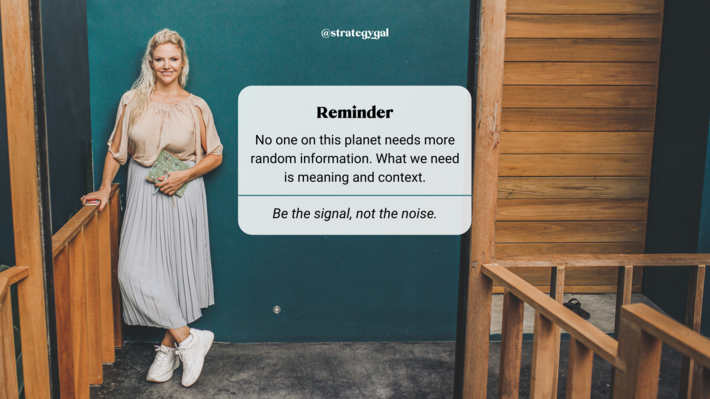
In a world of GPT-3 AI-generated content, are writers even needed? In a recent business experiment, I set out to answer this question.
If youre wondering, who am I to tell you anything about GPT-3 AI? Well, Im Lillian Pierson, and I help data professionals become world-class data leaders and entrepreneurs – to date Ive trained over 1 million data professionals on the topics of data science and AI. Im a data scientist turned data entrepreneur, and Ive been testing out GPT-3 AI for about 3 months now in my data business, Data-Mania.
As a data entrepreneur, I spend a TON of my time, energy, and financial resources on creating content. From podcast episodes to YouTube scripts, to emails and social media posts, content creation eats up a huge chunk of my week.
So when I heard about GPT-3 AI copy services, I was curious to know: would this be a useful tool in my business?
Would I be able to 10x my content production rates? Replace freelance writers?
Rather than simply buying into the online hype, I wanted to conduct my own research – and today, I want to share it with you. Whether youre a data entrepreneur, data professional, or simply a fellow data geek who LOVES reading about the smartest AI companies, read on to get the full scoop on GPT-3 AI and how I believe it will shape the content writing industry.
In this article, well cover:
- What is GPT-3 AI?
- The pros of GPT-3
- The cons of GPT-3
- 3 guidelines to use GPT-3 while maintaining brand integrity
- Will GPT-3 change the content writing industry?
Lets get started.
What is GPT-3 AI?
First of all, what is GPT-3 AI? GPT-3 is a model for human-like language production written in Python. It uses large amounts of texts crawled from the web to create similar, but unique content. Since it was developed by OpenAI and released for public use in June of 2020, there have been TONS of data entrepreneurs creating SAS products that run off of GPT-3.
Some of the most common GPT-3 AI content services are Copy.ai and WriteSonic. I conducted my experiment using Writesonic.
Pros of GPT-3 AI
Alright, let’s start with the good.
1. Great for Product Descriptions
During my experiment, I have to say I was genuinely impressed by the product description snippets I was able to create using Write Sonics GPT-3 AI service.
All I needed to do was input the name of my product (in this case, it was my free Data Superhero Quiz) as well as add product info such as features and benefits. All I did was copy and paste some bullet points from my sales page and I was good to go.
And wow! With the click on a button, I had ten high-quality product descriptions to pull from. The service was even suggesting some features and benefits I hadnt even thought of.
2. Unique and Anonymous
A big pro to using GPT-3 AI content is that everything it spits out is completely unique. Theres no need to worry about plagiarized content. Also, the service is totally anonymous – no one will know youre using AI so theres no need to worry about being judged.
3. Good ROI on Your Time and Money
After reviewing the product descriptions created by Writesonic, I have to admit I liked them a lot better than the ones Id written myself. Considering the fact theyd taken me a good 10-20 minutes to write, PLUS Id purchased templates for $50 to speed up the process of writing them, the GPT-3 AI content is clearly better value. I had dozens of descriptions within just 30 seconds.
Overall, if you are looking for a tool to help you quickly and easily create short content snippets (i.e. product descriptions!) you should definitely add a tool like Copy.ai or Writesonic to your toolbox.
Cons of GPT-3 AI
While I had some successes with GPT-3 AI, I also had some total failures.
1. Lacks context
Unfortunately, GPT-3 is not great at generating content if it doesn’t have the context directly from you.
I tried playing around with its article writing mode, which is still in beta.
Essentially, you give it an outline and an introduction, and then it returns the entire article with all of the body copy.
While technically the information may be factually correct, it lacks context. It wont have the context needed for YOUR particular audience, so it wont be intelligible.
Information without context about WHY it matters to your customers is useless. They need to know why they should care and how what youre sharing will actually have an impact on their life. Without that, youre simply producing content for the sake of content, and adding to the noise.
2. In some cases, it gets things wrong.
While in some cases the information might be garbled and lacking context, in other instances, the content GPT-3 AI provides could be flat out wrong. GPT-3 AI will lack the nuances about your industry that come naturally to you.
For example, when I was using Writesonics article mode, one of the headings was What are the obligations of a Data Processor?
However, the body copy that GPT-3 produced did NOT correlate with the appropriate heading. Rather than telling me the obligations of a Data Processor, it gave me content about the role of a Data Protection Officer.
It brought up a totally different point. And while it may be related, if you had actually used this content on the web, it wouldve reduced your credibility and put your brand in a bad light.
In short, I would straight up AVOID GPT-3 AI for article-writing or long-form content. You could potentially use it as a research tool, to help you uncover relevant topics you may not have thought of, but always be sure to dig deeper into those topics and not rely on what GPT-3 gives you.
3 Guidelines To Make the Most of GPT-3
Here are three recommendations and safety guidelines for you to use in order to make sure that you’re protecting your brand integrity and the quality of the content you produce when working with GPT-3.
1. Review GPT-3 AI Content Carefully
GPT-3 is going to create a TON of content for you. Its up to you to pick and choose what is valuable, and to make sure everything is factually correct and appropriate.
2. Add Personalization
Whatever content that GPT-3 gives you, you need to improve on it, add to it and personalize it for your brand. You know your customers better than anyone else. I recommend seeing GPT-3 as more of a content research tool than as something to produce finished copy.

3. Add Context
No one on this planet needs more random information. What we need is meaning and context. So while the creators of GPT-3 are correct in saying it produces human-like text, its not able to add the context readers need in order to create meaning in their lives.
Content without context doesnt compel readers to take action based on what theyve read – all it does is overwhelm them. Information for the sake of information simply adds to the noise – which is something all of us online content creators should be trying to avoid at all costs
4. Listen to All Content Aloud
And last, but not least, rule number four is to listen to your end text aloud.
You want to make sure that whatever content GPT-3 AI spits out, youre listening to out loud so you can make sure its conversational and flows nicely. Itll also be an opportunity to double-check everything is factually correct.
My favorite tool to do this is a TTS reader.
By following these guidelines, youll be able to ensure that you can safely increase your content production WITHOUT harming your brands reputation.
Will GPT-3 change the game for writers?
After reviewing the results from my business experiment, I STILL believe that there is a need for highly skilled content writers. However, the rise of GPT-3 AI demonstrates how AI is certainly changing the content marketing landscape.
While I do believe GPT-3 may replace low-level, unskilled writers (who, let’s be real, probably shouldnt be pursuing writing in the first place) businesses will continue to require writers who can deliver nuance, context, and meaning to their customers.
At best, GPT-3 will become a tool that helps smart writers speed up their writing process and make their lives easier. They may use GPT-3 content as a starting point from which they can create highly personalized and meaningful content.
At worst, the web could become flooded with GPT-3 AI generated that only adds noise to the already crowded internet, significantly contributing to the overwhelm people are already experiencing when trying to find high-value information online.
In order to create long-form, meaningful content, GPT-3 AI content tools still have a long way to go, but they show promise as a tool to speed up businesses content workflows.
About the Author
Mentor to World-Class Data Leaders and Entrepreneurs, CEO of Data-Mania
Lillian Pierson, P.E. helps data professionals transform into world-class data leaders and entrepreneurs. To date shes educated over 1 Million data professionals on AI. Shes also been delivering strategic plans since 2008, for organizations as large as the US Navy, National Geographic, and Saudi Aramco.
Get the Data Entrepreneur’s Toolkit (free)
If you love learning about this GPT-3 tool, then you’re also going to love our FREE Data Entrepreneur’s Toolkit – its designed to help data professionals who want to start an online business and hit 6-figures in less than a year.
It’s our favorite 32 tools & processes (that we use), which includes:
- Marketing & Sales Automation Tools, so you can generate leads and sales – even in your sleeping hours
- Business Process Automation Tools, so you have more time to chill offline, and relax.
- Essential Data Startup Processes, so you feel confident knowing you’re doing the right things to build a data business that’s both profitable and scalable.
